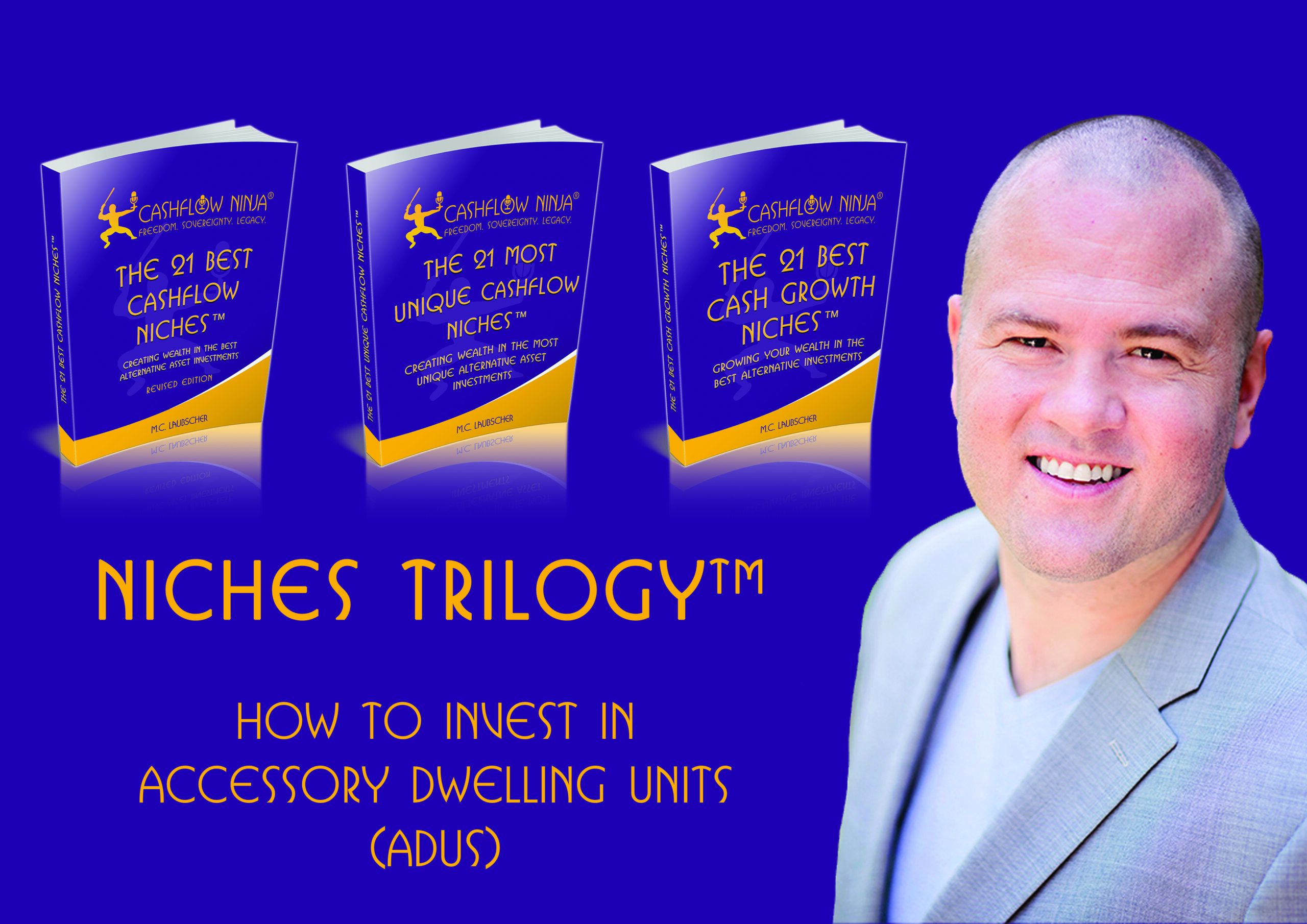
Accessory Dwelling Units (ADUs) are secondary residential units that share a property with a primary single-family home. These units can take various forms, such as separate structures built on the property, additions to the existing home, or conversions of spaces like garages or basements. Often referred to as granny flats, in-law suites, carriage houses, or backyard cottages, ADUs offer homeowners a versatile way to utilize their property more effectively.
ADUs come with several notable features. They are independent living quarters, complete with their own kitchen, bathroom, and sleeping area, making them self-contained dwellings. The types of ADUs vary and include detached ADUs, which are standalone units separate from the main house, and attached ADUs, which connect to the main house but maintain a private entrance. Garage conversions and basement or attic conversions are also popular, utilizing existing spaces within the main home to create livable areas. Typically, ADUs are smaller than the primary house, ranging from 400 to 1,200 square feet.
The benefits of adding an ADU to a property are significant. For starters, ADUs can provide additional income, as homeowners can rent them out to help cover mortgage payments or property taxes. They also offer housing flexibility, allowing extended family members—such as aging parents or adult children—to live close by while maintaining their independence and privacy. A well-constructed ADU can boost the overall value of a property and contribute to sustainable living practices by being designed with energy efficiency in mind.
However, building an ADU requires careful consideration of several factors. Zoning laws and local building regulations vary by region and can affect the size, placement, and legal use of ADUs. Obtaining the necessary permits is crucial to ensure compliance with local building codes and safety standards. Financing the construction of an ADU can be costly, and homeowners may need to consider home equity loans, construction loans, or cash-out refinancing. Additionally, some neighborhoods may raise concerns about increased density or changes to the character of the area due to the addition of ADUs.
ADUs can be a smart solution for a variety of homeowners. Those looking to generate rental income, families seeking multigenerational housing options, property owners wanting to maximize their land’s utility, and homeowners planning to age in place can all benefit from incorporating an ADU. For example, a homeowner in California constructed a detached ADU in their backyard to rent out, providing them with supplemental monthly income while addressing the local housing shortage.
Why Invest In Accessory Dwelling Units (ADUs)
Investors are increasingly drawn to Accessory Dwelling Units (ADUs) for numerous reasons that make these secondary living spaces a valuable addition to residential real estate portfolios. One of the most significant benefits of ADUs is the potential to generate additional rental income. By building or converting a space into an ADU, property owners can boost their rental yield without purchasing a separate property, making efficient use of existing land and infrastructure and maximizing returns on their investments.
ADUs also enhance the overall value of a property. A well-designed ADU can make a home more appealing to buyers interested in rental income potential or housing for extended family members, translating into a higher sale price if the property is put on the market. The high demand for affordable housing in many urban and suburban areas makes ADUs an attractive solution for both homeowners and renters. Typically rented at lower rates than larger standalone homes, ADUs provide affordable living options while still yielding profit for investors, especially in areas with tight housing supply.
Another advantage of ADUs is their flexibility and multiple uses. Investors can choose to rent them out as long-term or short-term units or use them as housing for family members such as aging parents or adult children. This adaptability allows ADUs to respond to changing market conditions and investor strategies, supporting sustained profitability. Additionally, ADUs often come with lower development costs compared to buying or constructing a new property. By utilizing existing land and potentially shared utilities, ADU construction is more financially feasible than building from scratch.
Tax benefits and incentives further add to the appeal of ADUs. In some regions, governments offer tax breaks or subsidies to promote ADU construction as a means to increase housing stock. Investors may gain from reduced property taxes, grants, or low-interest loans, enhancing their return on investment. Additionally, the rental income from ADUs may qualify for tax deductions related to property maintenance and depreciation.
Adding an ADU also diversifies an investor’s income stream, acting as a hedge against rental market downturns. If the main property is vacant or between tenants, the ADU can still provide income, mitigating financial risk. Moreover, ADUs have broad tenant appeal, attracting singles, young couples, retirees, and small families seeking more affordable living options. This wide tenant pool can help investors maintain steady occupancy and reliable rental income.
Accessory Dwelling Units (ADUs) Ecosystem
The Accessory Dwelling Units (ADUs) ecosystem is an intricate network involving various stakeholders, from government bodies and property owners to builders and financial institutions, all contributing to the development, regulation, and sustainability of these secondary living spaces. Central to this ecosystem are local, state, and municipal governments, which shape the landscape through zoning laws and building regulations. These regulations dictate where ADUs can be constructed, their size, and their permissible uses. Legislative changes, such as relaxed zoning laws and incentives, can significantly boost ADU development, especially in regions addressing housing shortages.
Construction and design are also crucial aspects, with builders, architects, and construction companies specializing in compact, sustainable living spaces. These professionals focus on creating ADUs that maximize efficiency, meet building codes, and offer modern amenities. Options include modular and prefabricated units or custom builds tailored to specific properties. Designs often prioritize self-sufficiency, integrating essential facilities like kitchens, bathrooms, and living areas that blend seamlessly with the main property.
Financing and funding solutions are essential components of the ADU ecosystem. The financial aspect can involve significant investment, so banks, credit unions, and lending institutions offer home equity loans, construction loans, and cash-out refinancing options. Some governments and nonprofit organizations even provide grants, subsidies, or low-interest loans to promote ADU construction and address local housing shortages.
Property owners and real estate investors are integral players, viewing ADUs as a means to generate rental income or provide housing for family members. For many investors, ADUs represent a strategic investment that enhances property value and maximizes land utility. The impact on housing affordability and the community is another key consideration. ADUs provide more cost-effective rental options than standalone homes, addressing housing supply issues in urban and suburban areas. They are particularly valuable in high-cost living areas, allowing for multigenerational living and offering downsizing options for retirees who wish to remain close to family.
Technology and sustainable practices are becoming more common within the ADU ecosystem. Smart home technologies, energy-efficient appliances, and eco-friendly building materials are used to improve environmental impact and operational efficiency. Sustainable features such as solar panels, green roofs, and passive heating/cooling systems align with the broader push for eco-friendly housing solutions.
Permitting and compliance are critical, involving interactions with city planning offices, building inspectors, and local regulatory agencies. The process can be complex, requiring expertise to navigate zoning laws and building codes, which is why property owners often consult contractors or specialists to ensure compliance.
For those looking to rent out ADUs, property management services play an essential role, handling tenant screening, rent collection, and property maintenance. The popularity of short-term rental platforms like Airbnb has also influenced the market, allowing ADUs to be rented as vacation or temporary stays, adding flexibility for property owners.
Despite the growing popularity of ADUs, challenges remain, such as neighborhood opposition, restrictive zoning laws, and high construction costs. Concerns over increased density and potential neighborhood changes often require policy adjustments, community engagement, and education to promote the benefits of ADUs to property owners and the broader community.
The future of the ADU ecosystem looks promising, driven by the need for affordable, flexible housing solutions. Trends likely to shape the sector include streamlined building and approval processes, the rise of prefabricated and modular ADUs, innovative financing models, and greater integration of smart home technologies. Sustainability will also continue to be a focus, with an emphasis on eco-friendly construction and energy-efficient designs. As cities and communities adapt to evolving housing needs, the role of ADUs is expected to expand, benefiting homeowners, renters, and investors alike.
How To Generate Income
Subscribe To Our Weekly Newsletter: The Wealth Dojo: https://subscribe.wealthdojo.ai/
Share This
Related

895: Josh McCallen: Why Airbnb Gurus Are Shifting To Boutique Hotels
My guest in this episode is Josh McCallen. Josh is a nationally recognized hospitality executive, conference speaker, innovator, builder & investor with a track record for developing exceptional resort properties and growing world-class operational teams. Josh is also one of the principals of Accountable Equity, an investment firm that specializes in historic resort communities and…

894: Michael Mathe: Private Lending In The Luxury Real Estate Market
My guest in this interview is Michael Mathe. Michael is an investor and entrepreneur. Michael’s businesses Little Pink Houses Of America and VIP Financial Education, provide amazing business opportunities and financial education. Links: Prefer Access Website: https://www.preferaccess.com/ preferninja@vipfinancialeducation.com Subscribe To Our Weekly Newsletter: The Wealth Dojo: https://subscribe.wealthdojo.ai/ Download all the Niches Trilogy Books: The 21…

893: Josh Clayton, Kirk Martin, Alec Roth: How To Invest In Movies
My guests in this episode are Josh Clayton, Kirk Martin, and Alec Roth from Firebrand Media Group. In this episode, they share how to invest in movies. Interview Links: Firebrand Media Group https://www.fmgfilms.com/ Billy Night Subscribe To Our Weekly Newsletter: The Wealth Dojo: https://subscribe.wealthdojo.ai/ Download all the Niches Trilogy Books: The 21 Best Cashflow Niches Digital:…
